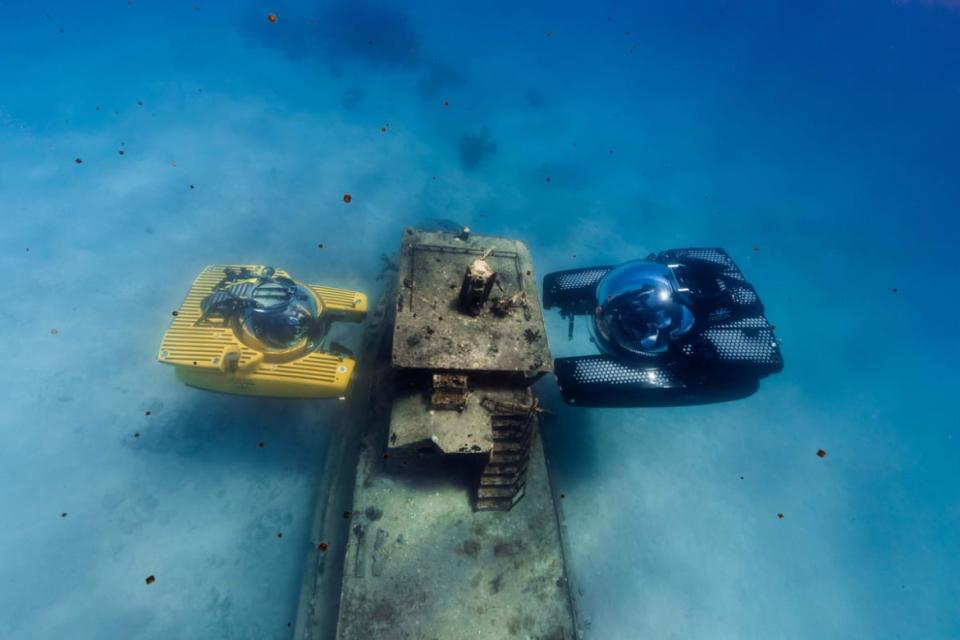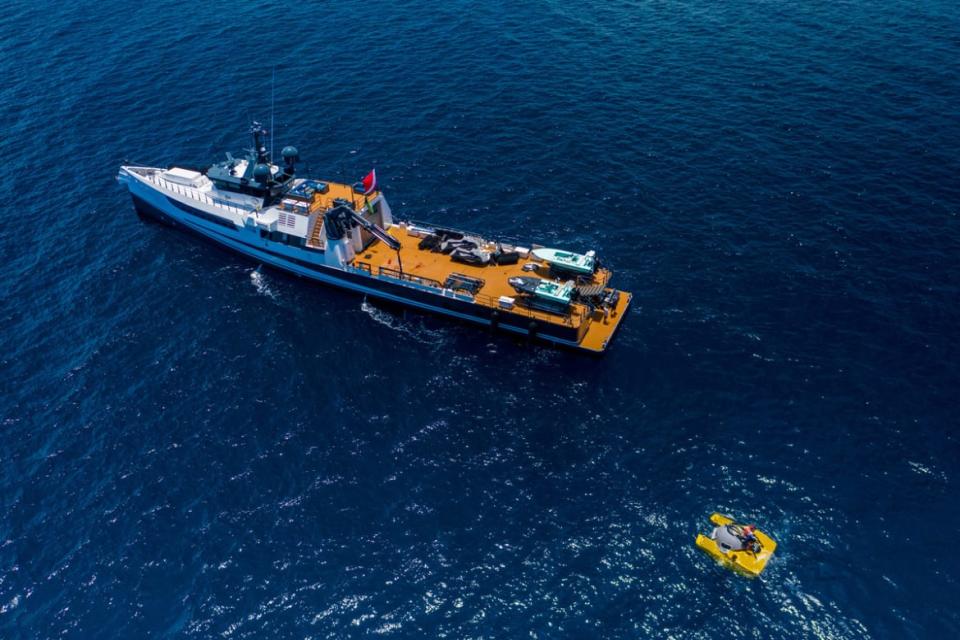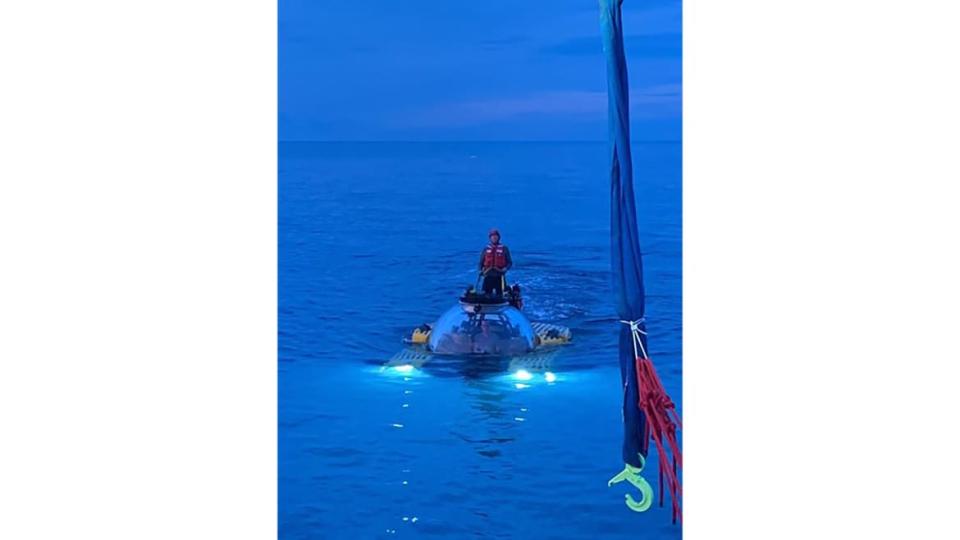The Weird and Very Wealthy World of Private Subs

Carl Allen knew something was missing. For decades, the wealthy businessman had been obsessed with the wreckage of the Maravillas, a 17th-century Spanish ship he was convinced had crashed off the Little Bahama Bank. He’d already purchased a small island in the Bahamas and a 164-foot yacht to assist in his search, but he needed something that would let him dive deep—as deep as a 400-year-old boat could sink.
So four years ago, he dragged his wife to the Fort Lauderdale International Boat Show and told her they were buying another yacht. Why? she wanted to know.
“Because we need somewhere to put the submarine,” he told her.
Today, Allen is part of a small community of private submersible owners: enthusiasts, explorers, and yes, exceedingly wealthy individuals across the world who make a hobby out of plumbing the ocean’s depths The implosion of the submersible known as the Titan, which killed five people this week on an expedition to the wreck of the Titanic, was the first glimpse many people had into this world. But private submarines are a thriving, if niche, business—one that has been steadily growing in recent years thanks to demand from mega-wealthy clients with a penchant for adventure who need something else to do with their yachts.
“We’ve discovered natural things that are hard to describe,” Allen said of his dives, which he takes several times a month. “You’re able to listen to music and have a cocktail and go down into this world that—it’s like being on another planet.”

Carl Allen’s Triton submersible can reach 3,300 feet below the ocean’s surface.
Among the first developers of the private submersible were Charles and Will Kohnen, two brothers based in Southern California who started building subs in the mid-1990s, with the help of a few engineer friends. At the time, Kohnen told The Daily Beast, most human-operated submersibles had been replaced by robotic versions, which were cheaper and more efficient to use. The idea of selling submarines seemed crazy. “In the mid ’90s everyone was like, ‘Are you crazy, who’s going to buy a submarine?’” he recalled.
All of that has changed since the turn of the century. Kohnen estimates there are some 200 private, non-military submersibles in the world, about a quarter of which were made in the last decade. Competitors of the company owned by Kohnen and his brother, Hydrospace Corporation, have sprung up to meet demand; among the most prominent are Florida-based Triton Submarines and the Dutch company U-Boat.
Kohnen stressed that these vessels, unlike the doomed Titan, were tested and tried by third-party assessors—a process known in the maritime world as “classing.” He compared most private submersibles to an FAA-approved airplane: “You can’t just build something in your garage and say, ‘Here’s a submarine, go and do great things,’” he said.
The uses of these private subs range from tourism to scientific exploration to cinematography. A growing number of cruise ships and resorts, such as Red Bull co-founder Dietrich Mateschitz’s Laucala Island, offer private tours as bonuses for their guests. Erik Hasselman, commercial director for U-Boat Worx, previously told The New York Times that cruise ship adoption was a catalyst for industry growth, saying it “changed the general perception because it’s big business—if a cruise company is doing something, then it must be proven and foolproof.”
Another major driver: wealthy individuals like Allen, who purchase the vessels as additional tools in their already bursting fleets. Venture capitalist Tom Perkins owns a submersible, as does Norwegian fishing billionaire Kjell Inge Røkke, Russian oligarch Roman Abramovich, and the aforementioned Mateschitz. The late billionaire Chris Cline is reported to have kept one on his superyacht; hedge fund manager Ray Dalio is such a fan he invested in Triton and started his own submersible exploration company, OceanX. In a headline announcing Dalio’s investment last year, Curbed proclaimed: “The Status Submarine’s Time Has Come.”
While the big manufacturers are working on more affordable prototypes (read: about $1 million), owning a submarine is still a wealthy person’s game. Many of the boats are so heavy they require a crane to put them in the water and a large garage or superyacht to store them. A good pilot can cost up to $100,000, a great pilot costs even more. Asked if he had any advice for people looking at getting into subs, Allen said: “You better have a few bucks.”

Carl Allen’s submersible leaves the yacht where it is stored.
But making it to the ocean floor takes more than just wealth. Ricardo Aruajo, a travel planner who designs specialty trips for the ultra-wealthy, said he has been approached multiple times about planning deep-sea trips for wealthy clients, who often back out when they realize the planning and danger involved. He once started working on a trip for one client to go to the Mariana Trench—the deepest part of the ocean—and had even taken a few test dives before the client canceled.
Clients who do follow through, Aruajo said, are “adventurous people who like to challenge themselves, to see the unknown.”
“There is always a part of risk, but the thrill of finding something, of pushing the limits, makes you take the chance,” he said.
That is certainly the case for Allen, who says he takes his Triton 3300 submersible—so named because it can go 3,300 feet underwater—out three to four times a month, depending on the weather. Allen was always passionate about the sea; he grew up scuba diving, staring out the window at the ocean, and doodling sub designs on scratch paper. He recalled that when he took his first dive in a submersible, “I said, ‘I don’t think I’ll ever put scuba tanks on the rest of my life.’” And while he still hunts for treasure, he said, his favorite thing to do is to take other people out in the sub, to show them the mysterious world lurking below the water’s surface.
“Once you get below 200 feet in the Bahamas… you see stuff no man has ever seen before,” he said. “And it’s spectacular.”
Kohnen has a slightly more pragmatic view of the industry. He firmly believes that sending humans deep underwater is essential to understanding the world we live in. It’s a commonly repeated fact that we know more about space than we do about the ocean floor, but Kohnen extends this: Once you get deeper than about 100 meters, he said, “no one knows anything.”
To Kohnen, having humans onboard is crucial to learning more. Just a few years ago, he said, he spotted a species of shark in French Polynesia that had never before been located there. Scientists were so blown away they published a research paper on the subject.
“If we just sent robots and cameras, I don’t think it’s sufficient,” Kohnen said. “Why are we still sending astronauts in space? Because there is an inherent capability [in humans] that does add value in the long run.”
“And that’s why we’re building manned subs,” he added.
There is also a sense of community in the industry that keeps many people hooked for life. Because of the relatively small number of manufacturers and owners, Kohnen said, “everyone knows everyone.” (One submersibles company declined to comment for this story because they knew several of the Titan victims.) Allen said his participation in the submersibles world has brought him together with billionaires and world explorers, and even spawned business deals. “It’s really like a diplomat, that little yellow sub,” he joked.
Allen’s former submarine pilot, Capt. Les Annan, recently started a Facebook group for private sub enthusiasts, which has about 1,700 members ranging from wealthy owners like Allen to a 17-year-old kid who constructed a three-foot submarine out of sewer pipe, he said. (“I don’t know what his parents were thinking,” he laughed.) One of the most recent posts was from OceanGate adviser David Concannon just under a year ago, with a photo of a submarine preparing for a voyage. “Sunrise launch to Titanic,” he wrote.

Capt. Les Annan surfaces from an underwater dive.
The Titan disaster notwithstanding, private sub fans maintain the hobby is safe. There are stringent maritime laws governing passenger submarines, and the third-party “classing” bodies conduct regular checks on all vessels they approve. A purchase of a Triton submarine comes with a six- week course on how to operate the vessel, similar to getting a pilot’s license. Most subs also come with extra food, 96 hours of additional air, safety beacons, and back-up power sources.
Still, Allen said the Titan tragedy would make him more cautious going forward. “I think I’ve been a little aloof, and after these events this week I have got a new way of thinking,” he said.
He added: “In a weird way these guys, they’ll probably end up saving a lot of lives because of what happened here.”
His former pilot sees it differently. Asked if the Titan’s loss had changed his thinking, Annan shrugged.
“Frankly, I’d much rather go that way than dying of old age in my sleep,” he said. ”Gotta go some way, might as well go out with a bang.”
Get the Daily Beast's biggest scoops and scandals delivered right to your inbox. Sign up now.
Stay informed and gain unlimited access to the Daily Beast's unmatched reporting. Subscribe now.

